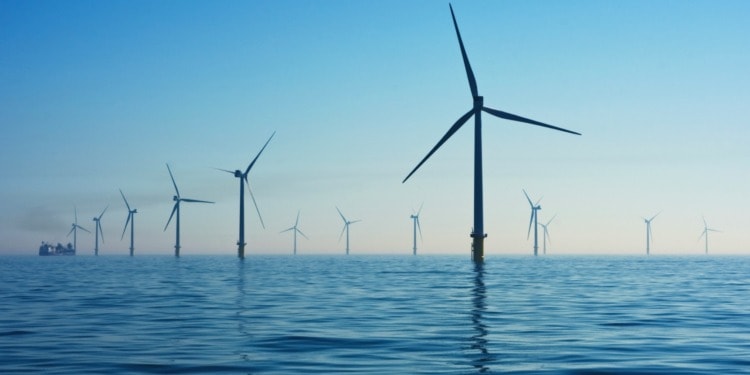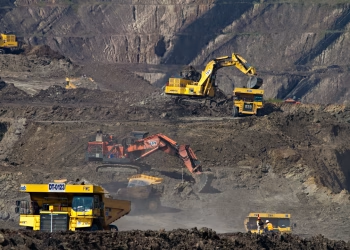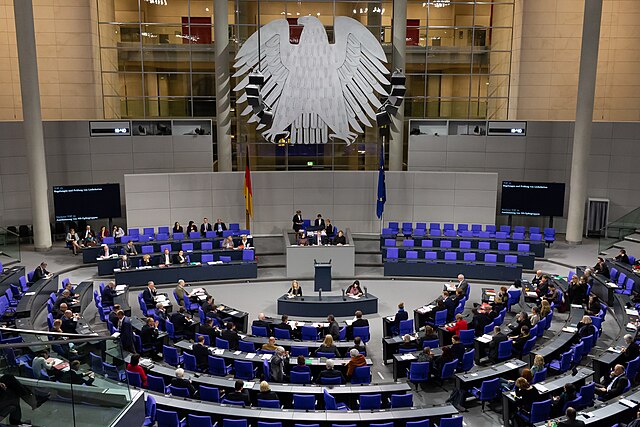The International Energy Agency (IEA) has released a report this month outlining the necessary steps for the world to achieve its target of limiting global warming to 1.5°C under the conditions of the Paris Agreement of 2015.
This comes as almost 200 countries have submitted “major” pledges — Nationally Determined Contributions (NDCs) — on energy and climate change mitigation at the COP28 summit in Dubai late last year. These governments have set key goals for the year 2030 to reach the 1.5°C objective.
Notably, these include tripling renewable energy capacity, doubling energy efficiency improvements, reducing methane emissions and the continued transition away from fossil fuels. IEA’s report mainly addresses the aim of tripling renewable energy capacity and the challenges in doing so.
Following the drafting of these goals, the focus turns to implementation, both globally and on a national level. In 2025, new NDCs will need to be submitted with revised ambitions for 2030 and new ones for 2035. These will help better outline the path to successfully realising the goals made in Dubai last year.
The IEA’s report describes how the specific goal of tripling renewable energy capacity by 2030 is accomplishable, if very ambitious at the current moment. With great momentum in the industry and increased competition among fossil fuels with renewable energy sources, the IEA maintains that there is optimism this goal could be achieved.
According to the report, the world is currently off track to meet commitments made at COP28. Of the 194 NDCs submitted already, only 14 indicate clear and measurable targets for total renewable energy capacity.
The pledge would require 11,000 GW of renewable energy capacity to be installed globally by the target date; at the moment, only 12% (1,300 GW) of that goal is outlined in current NDCs. Within those pledges, China’s NDC accounts for 90%, or 1,200 GW.
Based on IEA’s analysis of all existing policies and plans among 150 countries around the world, 8,000 GW of renewable energy capacity are defined — still significantly short of the goal. This analysis takes into account policies and plans not explicitly listed in existing NDCs.
Reacting to the report, Dean Cooper, WWF’s Global Energy Lead, said: “World leaders must honour their climate finance commitments to ensure inclusive climate action. Time is running out, and countries must work together to halt all new investments in fossil fuel reserves. They must redirect these funds to renewable energy and energy efficiency.”
Among the current sources of renewable energy, solar power and wind energy continue to be most prevalent in these countries’ ambitions. Should the goal for 2030 be reached, solar power would surpass hydropower, the largest source of renewable energy in the world in 2022. Hydropower, bioenergy, geothermal and other renewables are mentioned far less in these governments’ roadmaps to tripling capacity over the next six years.
To be sure, this is for good reason. As stated by Katye Altieri, an analyst at the thinktank Ember, “Solar and wind provide three-quarters of global growth, as they have proven their ability to scale rapidly to provide cheap, secure and clean energy. Technologies like bioenergy have failed to gain traction, not only because of costs but also the risk of emissions and wider social and ecological impacts.”
Related Articles: For a Successful Energy Transition: Keeping Cost of Renewables Low Is Not Enough | Solar Power From Space: How Would It Work? | What’s Next in Geothermal Energy? | Clean Investments in the US Hit Record High | How the EU Is Helping Power its Islands’ Green Transition
Still, as Dean Cooper details, there is a lot of room for renewables to compete within the energy space: “More than 80% of the world’s energy is generated by burning fossil fuels — coal, oil, and gas — which release billions of tonnes of carbon dioxide into the atmosphere, making them the primary cause of climate change. The science is clear: phasing out fossil fuels and embracing renewable energy sources are crucial to limit global emissions.”
Cooper adds that “WWF is calling for a faster, greener and fairer transition to renewables. A world powered by efficient, clean and renewable energy is possible, secure, and affordable. We must replace fossil fuels in the energy matrix with renewable energy and reach a full capacity of sustainable energy well before 2050. Countries must transition away from fossil fuels, aligning with an equitable phase-out by 2040 for developed nations and by 2050 for developing countries.”
No doubt that achieving the goals of COP28 would be a step towards Cooper’s hefty ambitions for the next 15-25 years. Almost half of the countries analysed by the IEA would double their renewable energy capacities if everything goes according to plan. Some countries, looking even farther ahead, aim to move faster. Nearly 30 countries are aiming to increase their capacities by more than two times and up to three times by 2030, accounting for close to 75% of global capacity goals. The countries leading this charge are China, the United States, India, Germany and Spain. Globally, this would mean that global renewable energy capacity would have grown by 2.2 times between 2022 and 2030.
Between 2022 and 2023 alone, global renewable energy capacity grew 64%. 560 GW of capacity was added in 2023. The good news according to the IEA is that this growth would be in line with achieving the 2030 targets and even larger goals beyond that.
Economies of scale and technological advancements in the renewables space could further help to accelerate this current momentum. Still, with new NDCs being submitted next year, it remains to be seen how viable the goal of tripling global renewable energy capacity really is.
Shirley Matheson, WWF Global NDC Enhancement Coordinator, said: “We urge governments to submit transformative plans with concrete actions that accelerate the scale and speed of the shift to renewable energy. Developed countries must take the lead by moving away from fossil fuels and increasing the use of renewable energy. This must be reflected by action on the ground, not just at the current talks in Bonn. This is crucial to protecting our planet for the future.”
The IEA describes similar hopes for governments at this crucial junction after COP28 last year. Their report suggests simplified principles that countries or groups of countries can undertake, specifically in relation to the renewable capacity ambition. These principles include: “incentivising power system flexibility; developing greater energy storage capacity; and leveraging digitalisation to enable greater demand response.”
To be sure, there are glimmers of hope, with renewable energy technology advancing quickly and more and more investment coming from both the public and private sector. However, few countries have explicitly outlined how they will grow their renewable capacity or limit global warming to 1.5°C. The NDCs submitted next year will make more clear just how big the gap is between the world’s actions in climate change mitigation and the world’s ambitions. But as Heymi Bahar, a senior energy analyst at the IEA and co-author of the report “Cop28: Tripling Renewable Capacity Pledge,” said: “There is a gap, but the gap is bridgeable.”
Editor’s Note: The opinions expressed here by the authors are their own, not those of Impakter.com — In the Cover Photo: Offshore wind farm in the United Kingdom, January 2019. Cover Photo Credit: Nicholas Doherty.













